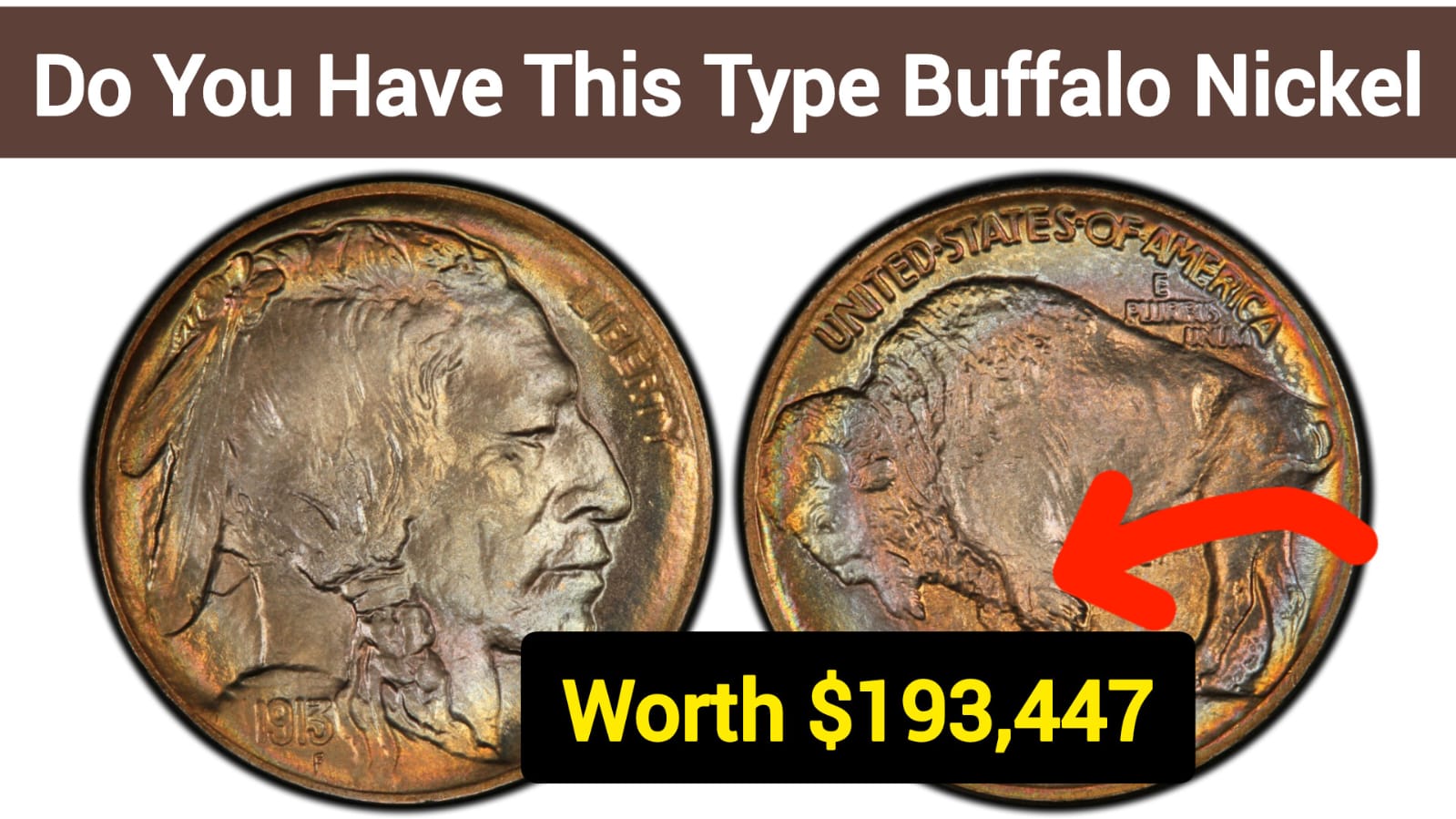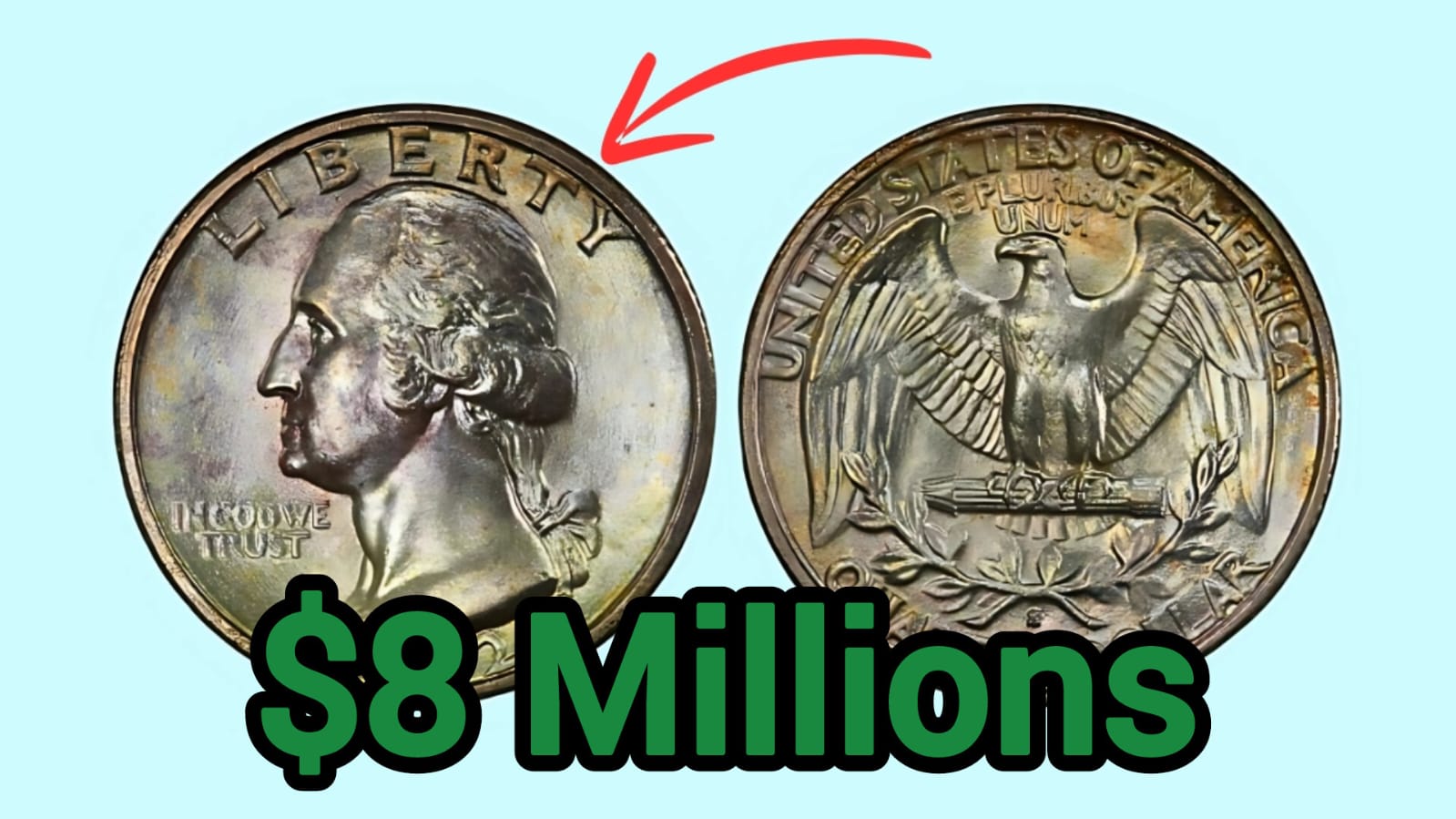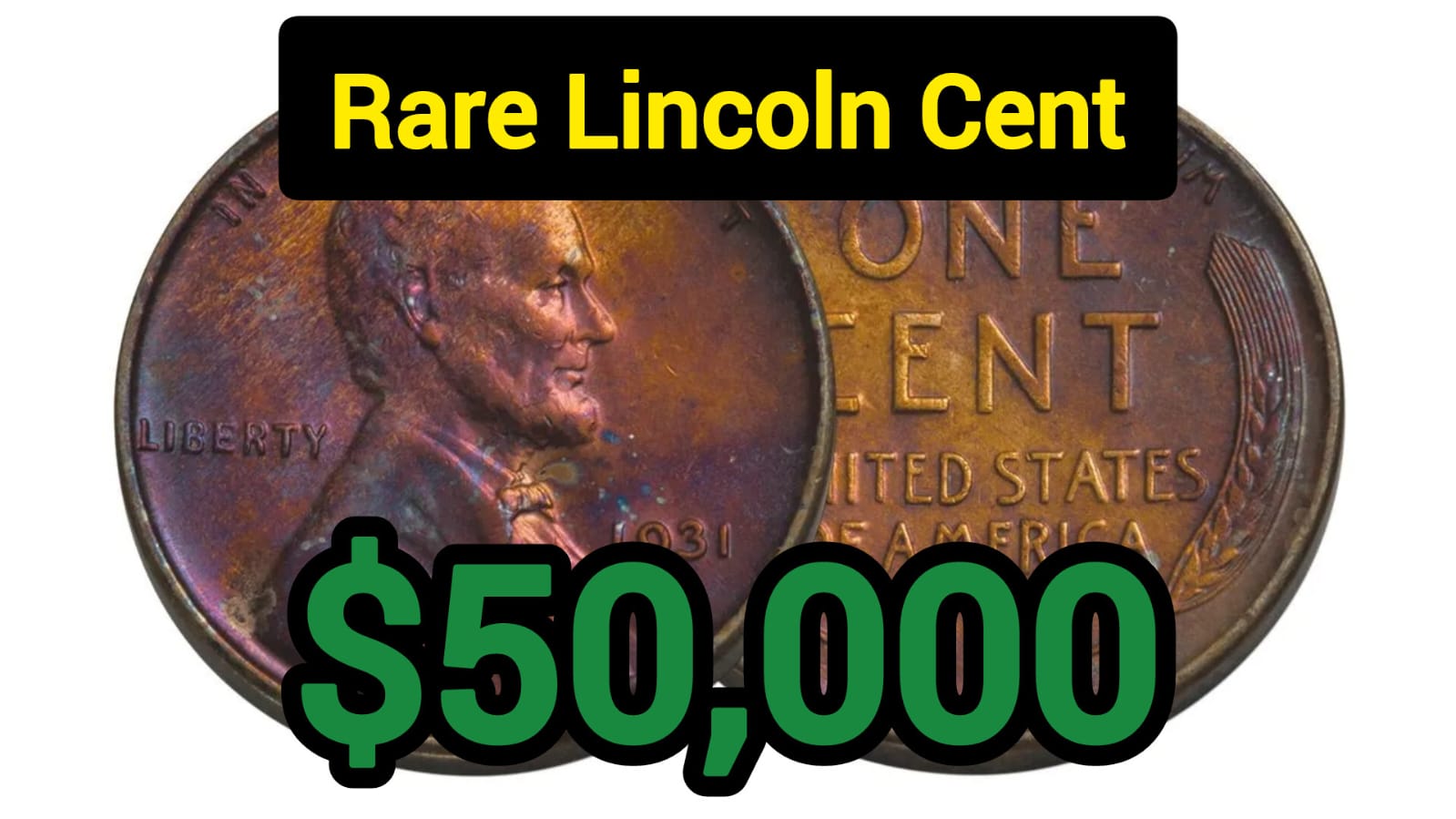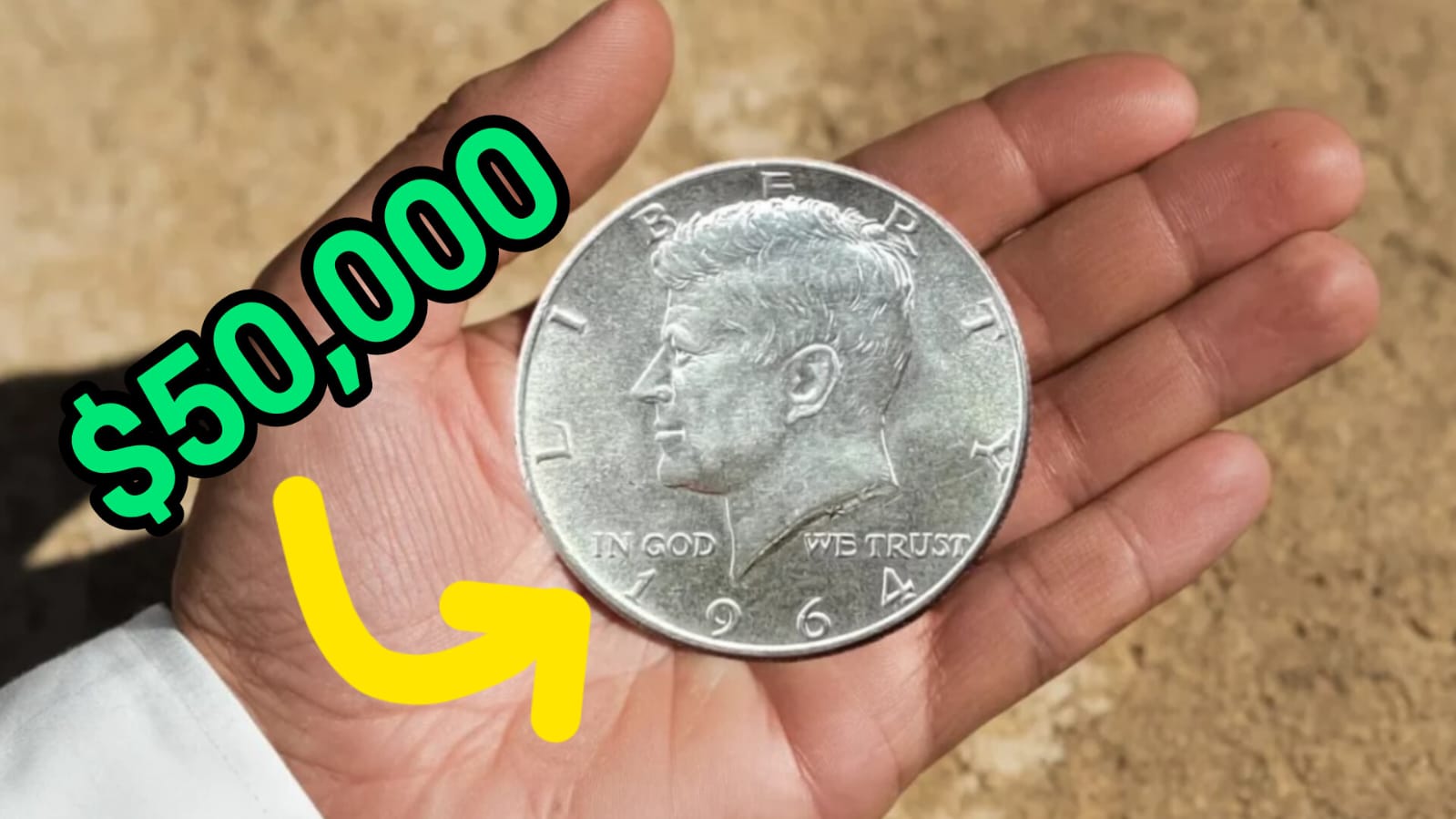Have you ever wondered if that old nickel tucked away in your coin jar might be worth a small fortune? While most of us toss our loose change without a second thought, some coins—particularly the 1913-D Type I Buffalo Nickel—can be worth staggering amounts to collectors. This iconic American coin, with its distinctive Native American portrait and buffalo reverse, has become one of the most sought-after treasures in numismatics. In exceptional condition, these nickels can fetch prices that might make your jaw drop—potentially up to $193,447 for the finest specimens.
What makes this particular coin so valuable? Is there a chance you might own one? And how can you tell if your Buffalo Nickel is the coveted 1913-D Type I variety? Let’s dive into the fascinating world of this rare American treasure and discover what makes it so special.
The History and Significance of the 1913 Buffalo Nickel
The Buffalo Nickel, officially known as the Indian Head Nickel, represents a pivotal moment in American coinage. Designed by renowned sculptor James Earle Fraser, this iconic five-cent piece was introduced in 1913 as part of President Theodore Roosevelt’s initiative to beautify American currency. The design features a composite portrait of three Native American chiefs on the obverse (Iron Tail of the Sioux, Two Moons of the Cheyenne, and John Big Tree of the Seneca Nation) and a North American bison—believed to be modeled after Black Diamond from New York’s Central Park Zoo—on the reverse.
What many casual observers don’t realize is that the 1913 Buffalo Nickel actually exists in two distinct varieties: Type I and Type II. The difference lies in the design of the reverse side, specifically in how the denomination “FIVE CENTS” appears. This seemingly minor detail makes a world of difference to collectors and can mean the difference between a coin worth a few dollars and one worth tens of thousands.
The Denver Mint produced 5,337,000 Type I Buffalo Nickels in 1913, making them relatively scarce compared to their Philadelphia counterparts. Despite this seemingly high mintage, finding one in pristine condition is extraordinarily difficult, which contributes significantly to their value in today’s market.
Type I vs. Type II: Understanding the Crucial Difference
The key to identifying whether you have the valuable Type I variety lies in examining the reverse side of your 1913-D Buffalo Nickel. Here’s how to tell the difference:
Type I (More Valuable):
- The buffalo stands on a raised mound
- “FIVE CENTS” appears on this raised mound
- The ground beneath the buffalo is more detailed and naturalistic
Type II (Less Valuable):
- The buffalo stands on a flat, recessed plain
- “FIVE CENTS” appears in a recessed area below the buffalo
- The ground is flatter with less detail
This design change wasn’t merely aesthetic. Soon after the first Buffalo Nickels were struck, the U.S. Mint realized that the denomination on the Type I coins would wear away quickly in circulation because it was placed on the highest point of the design. Charles E. Barber modified the design mid-year in 1913, creating the Type II variety with the denomination recessed to protect it from wear.
Think of it like the difference between writing on the peak of a hill versus in a valley—text on the peak will erode much faster when exposed to the elements. This practical consideration led to a design change that now creates a significant price differential for collectors.
What Makes the 1913-D Type I Buffalo Nickel So Valuable?
Several factors contribute to the extraordinary value of the 1913-D Type I Buffalo Nickel:
Rarity and Condition
While the Denver Mint produced over 5 million of these coins, very few have survived in pristine condition. Most were circulated heavily, with many losing their dates entirely due to wear. The highest-graded specimens—those in Mint State 67 or above—are exceedingly rare, with only a handful known to exist.
The auction record for a 1913-D Type I Buffalo Nickel stands at $32,200 for an MS68 specimen sold in 2004 by Bowers & Merena. However, in today’s market, with increased collector interest and inflation, exceptional specimens could potentially command prices approaching or exceeding $193,447, especially for perfect or near-perfect examples.
Historical Significance
As one of the first issues of this iconic American design from the Denver Mint, the 1913-D Type I holds special historical significance. It represents the beginning of what many consider to be one of America’s most beautiful and distinctly American coin designs.
Limited Production Period
The Type I design was only produced for a portion of 1913 before being replaced by the Type II variety. This limited production period enhances its scarcity and appeal to collectors seeking to complete sets of Buffalo Nickels.
How to Identify Your 1913-D Type I Buffalo Nickel
If you think you might have this valuable coin in your possession, here’s how to properly identify it:
Step 1: Check the Date and Mint Mark
First, confirm that your coin is dated 1913 and bears the “D” mint mark, indicating it was struck at the Denver Mint. The date appears on the obverse (front) side below the Native American’s neck. The mint mark can be found on the reverse below “FIVE CENTS.”
Step 2: Examine the Reverse Design
Look closely at how “FIVE CENTS” appears on the reverse. If it’s on a raised mound beneath the buffalo, you have the Type I variety. If it’s in a recessed area, you have the Type II.
Step 3: Assess the Condition
The value of your coin is heavily dependent on its condition. Numismatists use a 70-point scale to grade coins, with higher numbers indicating better preservation:
| Grade | Description | Estimated Value (2025) |
|---|---|---|
| Good (G-4) | Heavily worn, major details visible | $100-150 |
| Fine (F-12) | Moderate wear, more details evident | $140-180 |
| Very Fine (VF-20) | Light wear with sharp details | $160-200 |
| Extremely Fine (EF-40) | Minimal wear with nearly all details | $220-300 |
| About Uncirculated (AU-50) | Very light wear, almost as struck | $300-400 |
| Mint State (MS-63) | No wear, some minor imperfections | $400-500 |
| Mint State (MS-65) | No wear, exceptional eye appeal | $1,300-1,500 |
| Mint State (MS-67) | Superb condition, nearly perfect | $15,000-20,000 |
| Mint State (MS-68+) | Virtually perfect | $30,000-193,447 |
Remember that these values are approximate and can fluctuate based on market demand, auction results, and other factors.
Step 4: Consider Professional Authentication
If you believe you have a high-grade 1913-D Type I Buffalo Nickel, professional authentication is essential. Services like NGC (Numismatic Guaranty Corporation) or PCGS (Professional Coin Grading Service) can provide expert grading and encapsulation, which not only confirms authenticity but also preserves the coin’s condition.
Tips for Preserving Your Valuable Coin
If you’re fortunate enough to own this numismatic treasure, proper handling and storage are crucial:
- Never clean your coin – This can significantly reduce its value by removing the original patina and potentially causing microscopic scratches
- Handle only by the edges – Oils from your fingers can damage the surface
- Store in an appropriate holder – Acid-free, PVC-free holders designed for coins are best
- Maintain stable environmental conditions – Avoid extreme temperature or humidity fluctuations
- Consider professional grading and encapsulation – This protects the coin while authenticating its grade
Think of your rare coin as a delicate butterfly wing—beautiful to behold but easily damaged by careless handling. The slightest mishandling can significantly impact its value.
Conclusion
The 1913-D Type I Buffalo Nickel represents a perfect storm of numismatic desirability—historical significance, limited production, distinctive design, and extreme rarity in high grades. While the chances of finding one worth $193,447 in your pocket change are admittedly slim, they do exist in collections, inheritance lots, and occasionally in circulation.
Even if your Buffalo Nickel isn’t the high-grade 1913-D Type I variety, the series as a whole remains one of the most beloved in American numismatics. Each coin tells a story of America’s past, featuring iconic imagery that captures the spirit of the nation in the early 20th century.
Whether you’re a serious collector or simply curious about the potential value of your old coins, understanding what makes the 1913-D Type I Buffalo Nickel so special provides fascinating insight into the world of rare coins and the history they represent. So check those coin jars and family collections—you never know what treasures might be hiding in plain sight!
FAQs About the 1913-D Type I Buffalo Nickel
1. How can I tell if my Buffalo Nickel is a Type I or Type II variety? Examine the reverse side of the coin. On Type I nickels, the buffalo stands on a raised mound with “FIVE CENTS” appearing on this mound. On Type II nickels, the buffalo stands on a flat plain with “FIVE CENTS” recessed below the buffalo. The Type I design has more naturalistic ground details beneath the buffalo.
2. Why are so many Buffalo Nickels found without visible dates? The date on Buffalo Nickels was placed on a raised portion of the design, making it one of the first areas to wear away during circulation. This design flaw is one reason why well-preserved specimens command such high premiums—they’ve somehow avoided the typical wear that affects most Buffalo Nickels.
3. Are Buffalo Nickels made of silver? No, despite their silvery appearance, Buffalo Nickels are composed of 75% copper and 25% nickel. The U.S. did not use silver in five-cent pieces during this period, reserving it for dimes, quarters, half dollars, and dollars.
4. What other dates and mint marks of Buffalo Nickels are particularly valuable? While the 1913-D Type I is valuable, other key dates include the 1916/16 Doubled Die, 1918/7-D overdate, 1921-S, 1924-S, 1926-S, and the famous 1937-D “Three-Legged” Buffalo (a striking error where one of the buffalo’s legs is missing). These can all command significant premiums, especially in higher grades.
5. Should I clean my old Buffalo Nickel to better see the date and details? Absolutely not! Cleaning coins is one of the quickest ways to destroy their numismatic value. Even professional conservation is controversial and should only be performed by experts. If you have a valuable coin, it’s best to leave it in its original condition and seek professional grading and authentication.
10 Rare Jefferson Nickels Worth $500 Each – Hidden Treasures in Your Pocket Change
10 Most Rare & Valuable State Quarters Coins Worth 35 Million USD – Still in circulation



